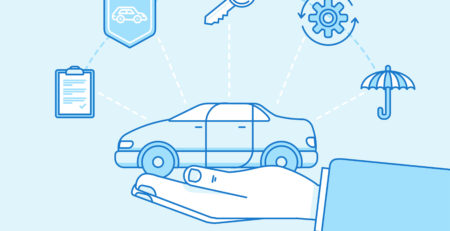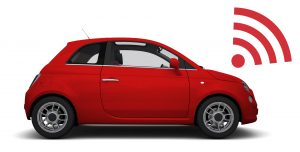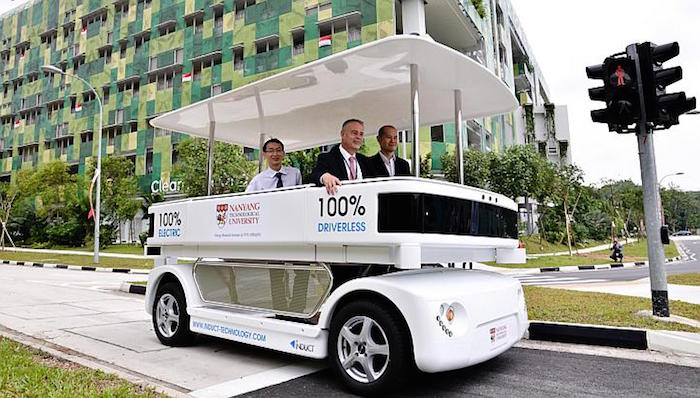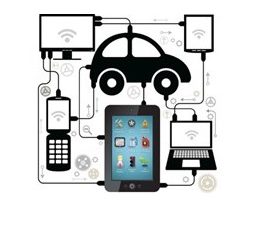Telematics has grown in the last several years resulting in touching almost every industry that we know of. A technology of this magnitude goes through rapid evolution and thereby resulting in rapid changes to its ecosystem. Putting together such an ecosystem for the automotive industry that is evolving at a similar pace can be seen as solving puzzle with no defined output.
On-Board Electronics
With electronics making its presence in every part of the automobile industry, the amount of data available from a vehicle is enormous. Handling such huge dataset requires some robust electronics; a box that could talk all languages with other controls on the vehicleand have good storage space is essential. CAN, Ethernet, Bluetooth andWi-Fi could all be supported, yet it is important to keep the hardware modular enough to suit the different applications or market segments the vehicle would serve, by keeping the cost under control. For example, supporting satellite communication on passenger vehicle is baseless;but supporting Bluetooth to talk to On-board infotainment system to collect passenger’s music taste to provide a jukebox radio solution is creating new market!Hence creating a product line of devices with varying hardware capabilities provides end applications (vehicles) select the Telematics solution based on the market they intend to serve.
Getting the data back
Collecting and storing the data, is the main part of the puzzle. Transferring the huge data collection from the machines to data centres can be done through cellular, satellite network for the automotive world. Offloading the data at Wi-Fi hotspots could also be a solution for fleet applications like Taxi services. Data transfer cost, overall load on the network and the gateway needs to be considered while designing the system. Data mulling using vehicle to vehicle communication could be an effective solution in terms of cost and load on the system.Another idea could be creating an off-board tool that can download the data from the vehicles locally over wired or wireless (Wi-Fi or Bluetooth) mode, which can later be uploaded to back office. Key to this would be a proper design of the localized tool; customer should see the benefit in using the tool and also in uploading the data to OEM’s data centres. For example, uploading the vehicle data to customer should be through a cloud back-up service, in order for them to access across their multiple mobile devices at the cost of one subscription.
At the back-office
Often, we are greedy to collect all the data, but without proper strategy and design on how to use the data both for OEM & Customers’ benefit, Telematics System can’t be successful. It is important to decide what type of data is necessary for what application. Subscription based model could help in achieving this. Subscriptions can be defined based on the type of application the vehicle could be put to, yet it should be scalable to define new subscription as the system evolves to cater different market segments. It should be noted that, design of on-board systems should take care of the subscription strategy, including scalability to make the final integration smooth.
Archiving the data for long term usage is the next piece of the big puzzle. It involves selection of proper cloud service with storage solutions and accessibility to develop different front solution and / or integration to custom ERP solution.
Putting it to use…
Once the puzzle of getting the data and storing it is solved, next tough job is presenting the data and features to the customers, based on the application. Customers do not look for all the technical details, but only the key points that could help them in their business or usability. For example, a Taxi service operator will look where are his/her equipment, their health and a way to disable them on theft. He doesn’t need the Latitude, Longitude values butonly needs to visualize the equipment on map. For an independent owner of the vehicle, front end solution could be a web service providing all the information about his / her vehicle, like maintenance history, service recommendations, and upgrade option for next car. Mobile application based solution would be best suited for passenger automobiles, especially for requesting support during emergency. Integration to service replacements, parts sales and other aftermarket products/solutions would improve the business for OEM and also improve the user experience for customers.
Front end solution are not limited to customers only. OEMs can create a data visualization service for their marketing team to easily decipher the vehicle’s usability; create marketing strategy and better sales pitch for the next car or upgrade for the user. Combining it with analytics, engineering team could improve their product design and add or remove features.
Security, at every level…
With Internet of Things model being first choice for most telematics systems, protecting the data, vehicle and customers from threats should also be part of system design. Be it access to on-board electronics or data servers at the backend, there should be protection at every level. At the vehicle level, clear differentiation between the data network and control network could protect the vehicle. Encryption, signatures on the data from the vehicle is needed to protect the customer, from their data (location, usage preference) being misused. Access control at server level is essential to protect both customer and OEM. For example, in order to make better products and to plan marketing strategy, competitors look for OEM’s datasets and customers’ user preference to make better products.
Validating it all together…
A well designed, developed Telematics System could still fail at deployment if not properly validated after integration of all pieces. Also, every piece of the system should be tested for their maximum capacity. Scalability tests using virtual machines could be one of the many solution to test the capacity. Such tests provide insight on what the customer would experience from the front end solutions. If the data reaches the system but does not load up on the webpage in time, it is still a failure; failure in design of data flow and usability. If the system integrates with OEM’s other solutions like service booking, the integration and usability of those solutions from front end should also be validated.
Finally, while designing a product we always look at requirements and failure modes to get the best system in place, but I strongly encourage incorporating a long term vision also as a design aspect. Think beyond current capacity of technology, and develop a system that could last a decade; an achievement by itself in today’s world!
Source: http://telematicswire.net/automotive-telematics-ecosystem/












